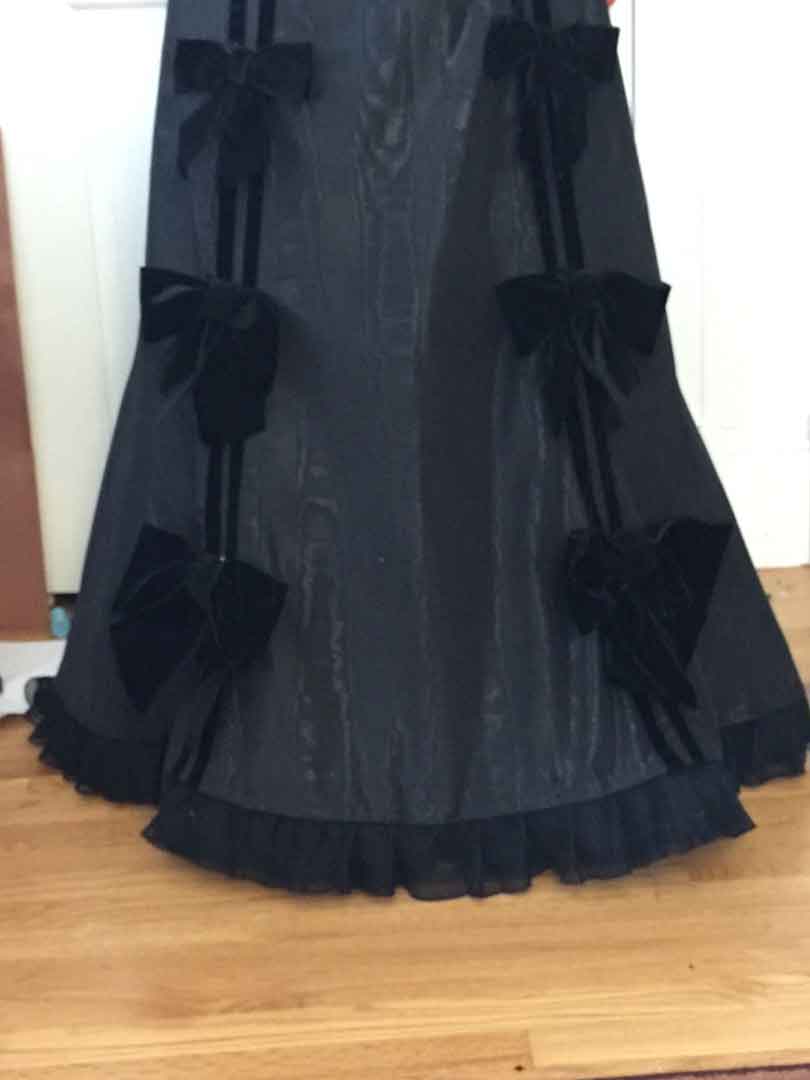Once I’d finished the basic dress, it was time to trim the skirt. Originally I’d planned a double row of wide pleats on the underskirt, with another row of pleats along the bottom edge of the apron overskirt. However, the more I looked at the ensemble the less I liked the idea of all those pleats– they seemed fussy, somehow, and not as tailored and simple as the bodice. It was time to rethink.
I decided to make one wide row of pleats to put along the hem, and to put off further decisions until that was attached. Accordingly, I pieced together a 300″ strip of my fabric (with the stripes oriented horizontally for a fun variation), did a narrow hem on both long edges, got out my homemade pleater board (more on that later), and started pleating. It was really annoying. It took forever. My pleats kept pulling out of the board as I worked, and waiting for the pleats to cool completely before moving on to the next section was extremely tedious. But I suppose it could’ve been a lot worse– I could’ve had to pin them individually before pressing them, right?














